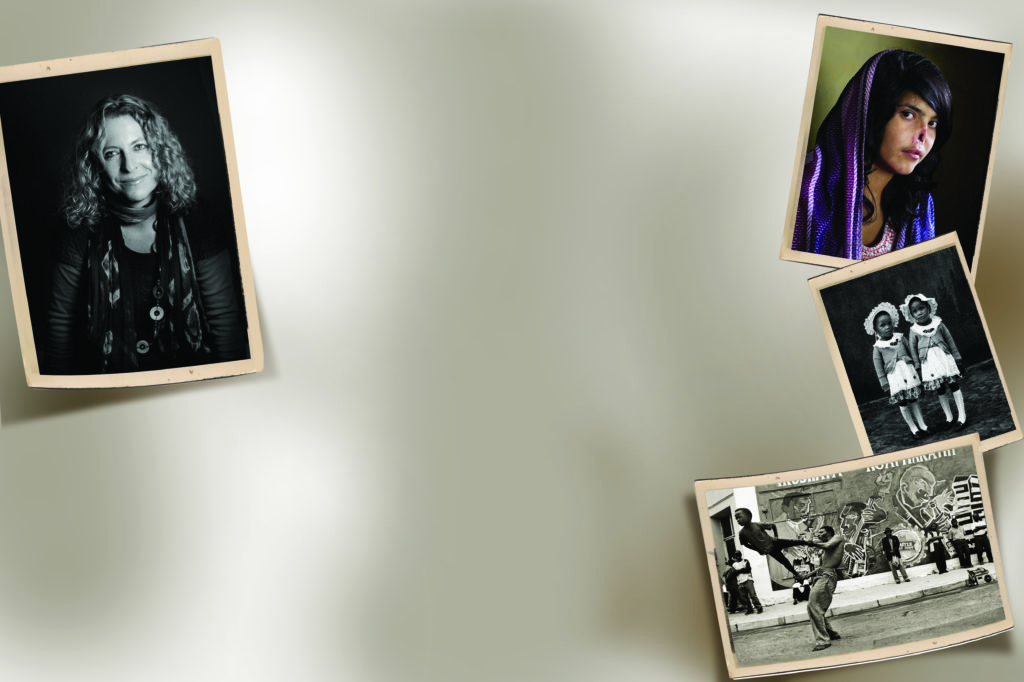It was the dangerous days leading up to South Africa’s first democratic elections on April 27, 1994. Jodi Bieber, a newspaper rookie photographer, was sent on assignment to cut her teeth in a violent Ulundi, in KwaZulu-Natal, a warzone for the African National Congress and Inkatha Freedom Party.
“I definitely knew I was not the war photographer because we witnessed quite a few violent situations in Ulundi. At one time we slept on the floor of our hotel, we thought we might be assassinated,” says Bieber, then freelance photographer at The Star, in Johannesburg.
In KwaZulu-Natal, Bieber suffered rough times documenting the tragic tale of the dead and wounded on the painful path to democracy.
“When I was not freelancing for the newspaper, I created bodies of work about different subjects; one of my first projects was the crime prevention unit in Hillbrow. I spent six months with police who worked undercover,” she says.
Right from the early days, Bieber and her camera tempted fate. She survived to win the prestigious World Press Photo of the year in 2010, for the photograph of a violated young woman in a refugee camp in Kabul, Afghanistan.
The picture spoke a thousand horrifying words. It captured the 18-year-old Bibi Aisha who was dragged by her angry in-laws to a mountain where her Taliban soldier husband cut off her nose and ears. She was left for dead as punishment for running from her marriage to escape years of abuse. Aisha survived and ended up in the refugee camp where Bieber found her in 2010.
“It took the photograph in a very plain room. When I created the picture I asked Bibi through an interpreter to close her eyes and think about her inner beauty and her inner power and look at me. She did that and I took the photo. That’s the photograph they used. But I was very worried because I took her very empowered photograph. I thought I had failed because TIME would want something more vulnerable. TIME said it was the most iconic photograph they had seen. And it went on to win the award. For one year I traveled to about 20 countries and I gave talks to universities. I was in front of the cameras for the first time,” says Bieber.
Bieber’s photograph changed Aisha’s life. In August 2010, TIME magazine ran it on the cover. A family in the United States read the story and adopted Aisha and the Grossman Burn Foundation is paying for a reconstructive surgery on her nose.
“When I choose projects, it’s because I identify with the subject. Because I identify, I relate to it, that’s really why I want to do it. Hopefully through what I do I am also learning something from it. Yes, the aesthetic for me is as important as the content, definitely. I like to touch on the subjects that have some relevance to me,” says Bieber.
When FORBES AFRICA met Bieber in late November, she was going on a two-week assignment to Papua New Guinea to photograph women and children scarred by violence. Doctors Without Borders commissioned this project. A week earlier, South African National Gallery had closed an exhibition of her work called Between Darkness and Light; what she calls a mid-career retrospective. It ran for three months.
Bieber says she creates relationships within the communities, because there’s always an element of danger.
“For me, people are people even if they are criminals, if they know you they won’t touch you, they won’t try to hurt you. I went to Iraq but I never felt fearful but you always know that something might happen. But when I was attacked, I was photographing outside a restaurant in Cape Town. So you never know when you could be attacked. Life is not as predictable. That’s why my book is called Between Dogs and Wolves, a title from French phrase entre les chiens et loups,” says Bieber.
Work is a world away from where Bieber was born in 1966, in Hillbrow, central Johannesburg. She grew up in segregated South Africa and went to all-white schools. The system fostered rebellion in her soul.
“I don’t think art was embraced when I was growing up but I used to question things. I had a history teacher I am friends with now. He opened our eyes to what was happening in South Africa at the time. Remember in 1976 was when we first got television. It was a completely different time, but I remember seeing those yellow nyalas [a military vehicle], I knew something was not right in our society. So, I was very rebellious at high school. I had an opinion and I had a voice, I was not just following the crowd,” she says.
In 1993, aged 23, Bieber took a part-time course at Market Photo Workshop in Johannesburg – the training ground for many successful African photographers – while she worked as a media planner for an advertising agency in Sandton, north of Johannesburg. After the course, Bieber left her job for a three-month trainee post at The Star. In 1996, she was one of 12 young world photographers selected for a week’s training in a World Press Masterclass in Rotterdam, Holland. This led to myriad awards at home and internationally.
Bieber’s expeditions are recorded in books: Real Beauty; which challenges stereotypes of beauty in South Africa, Soweto; about ordinary life in South Africa’s biggest township and Between Dogs And Wolves: Growing Up With South Africa, which documents the country for over a decade.
“All my work deals with issues relating to broader society and lots of it challenges the stereotypes that exist in the media,” says Bieber.
For two decades, Bieber’s work changed lives around the world and she vows to document the injustices. Her camera and her soul agree.
